#south american wildlife
Photo

Groove-Billed Ani (Crotophaga sulcirostris)
Family: Cuckoo Family (Cuculidae)
IUCN Conservation Status: Least Concerned
While many species of cuckoos are brood parasites that trick other birds into incubating their eggs and raising their young, the 3 species of large-billed, black-feathered cuckoos in the genus Crotophaga, known collectively as Anis, are not, and the Groove-Billed Ani (notable for being possibly the most common Ani species) is no exception: every Groove-Billed Ani lives in a small social group consisting of 4-10 individuals, with the number of individuals in a group always being even. This even numbering is the result of the way the flock is organised, as each flock is made up of 2-5 pairs of mates, and while each individual will only breed with their mate all individuals in the group work to establish and defend a shared territory and to construct a large, cup-shaped shared nest into which every female in the flock will lay eggs. Found in grasslands, shrublands and other open habitats, the Grooved-Billed Ani is native to much of northern South America and southern North America (although on occasion it may be observed as far south as northern Argentina and as far north as Canada as a vagrant) and feeds on fruits, seeds, insects and small vertebrates, with its large and extremely powerful beak being well suited to breaking hard seed shells as well as the exoskeletons and bones of prey. Throughout the majority of its range this species is resident (non-migratory), but in the northernmost extremes of its North American range it may seasonally travel south to avoid cold weather and low resource availability during the winter.
--------------------------------------------------------------------------
Image Source: https://www.inaturalist.org/taxa/1972-Crotophaga-sulcirostris
#Groove-Billed Ani#ani#anis#cuckoo#cuckoos#bird#birds#zoology#biology#ornithology#animal#animals#wildlife#South American wildlife#North American wildlife
932 notes
·
View notes
Text

Amazon milk frog, Trachycephalus recinifictrix
Native throughout northern South America, living in the canopies of the rainforest. They get their name from the milky white substance they secrete when threatened that can cause illness or death, similar to other species like poison dart frogs.
#south american wildlife#wildlife#frogs#zoo animals#zoos#rainforest#amphibians#animals#milk frog#wildlife photography#nature photography#frog#mine
181 notes
·
View notes
Text

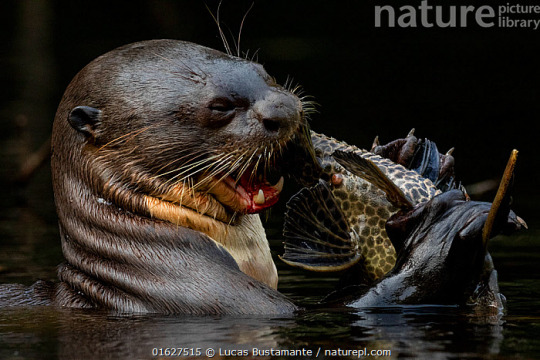
Giant river otter (Pteronura brasiliensis) eating a catfish.
Yasuni National Park, Orellana, Ecuador
Photos © Lucas Bustamante
143 notes
·
View notes
Text
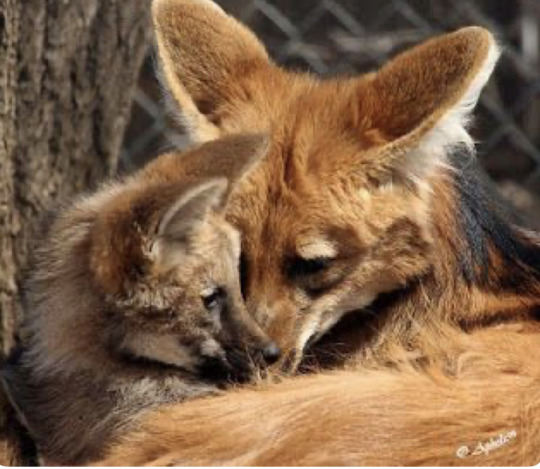
Maned wolf and pup
The maned wolf is not actually a wolf. It is the only species in the genus Chrysocyon (meaning “golden dog) and is the largest canine in South America. Near threatened.
65 notes
·
View notes
Text

Royal Flycatcher
167 notes
·
View notes
Photo
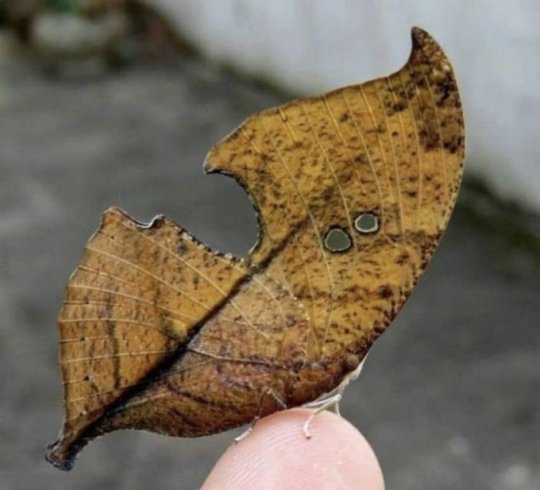
What’s this? A leaf wing butterfly (Zaretis itys). Weird and wonderful, yes?
#Animals#camouflage#amazing insects#bizarre creatures#leaf wing#unusual butterflies#Mexican wildlife#South American wildlife
80 notes
·
View notes
Text







Today's beasts, capybara! With an orange, a frog, and a butterfly. I'm glad the internet developed such a love affair with these guys, they're unique and such a delightfully odd creature. An absolutely massive rodent who just swims and chills, to the point a lot of smaller creatures are calm around them too. That said, remember they're not a pet, they're super destructive to your home and have exactly the kind of bite a giant rodent is capable of! Let the wild be wild.
The butterfly capybara is the last friend shaped boy I have right now, so if you'd like him or any other beast, please check out Bittythings and Beasts.
https://www.etsy.com/ca/shop/BittyThingsAndBeasts
#capybara#wildlife#south american wildlife#rodents#capybara meme#friend shaped#polymerclay miniatures#polymer clay#cute art#kawaii art#my art#anime north 2023
6 notes
·
View notes
Text
Creature Awaits #181
Each week I plan to feature an amazing creature, admiring God's fantastic artistry. Hopefully it’ll brighten someone’s day to see something new and interesting if they haven’t seen it before. : )
Continuing our November Fall Color Special! : D
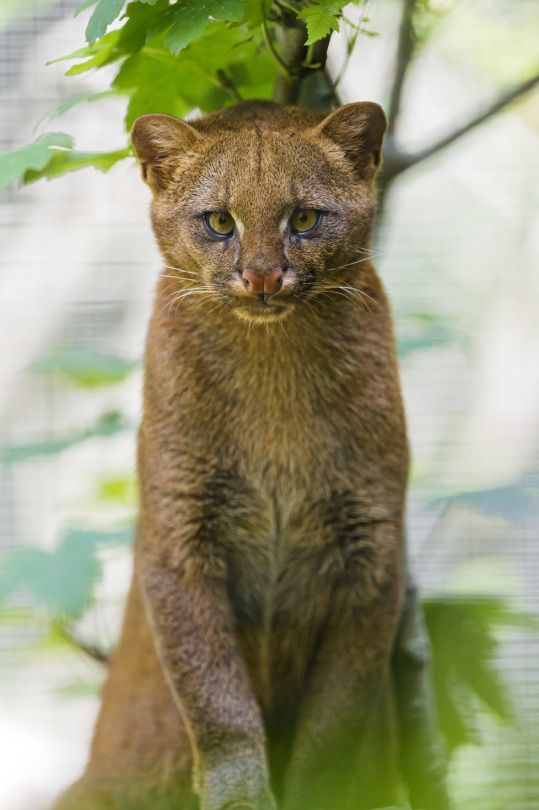
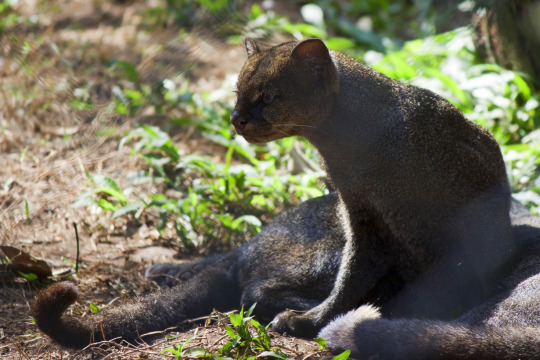
(Top photograph taken by the amazing photographer who goes by the name Tambako the Jaguar (CC BY-ND 2.0). Bottom photograph taken by another amazing photographer, Fábio Manfredini (CC BY 2.0))
The Jaguarundi
A.K.A: The Gato Moro, the Leoncillo, the Tigrillo, the Eyra
Scientific Name: Herpailurus yagouaroundi
Region: Southern Mexico and much of South America
Size: Averaging roughly 12" (30.5cm) tall at the shoulder and 44" (112cm) long.
Interesting Notes: With its shorter legs, slightly flatter head shape and minimal marking variance (even on the back of their relatively rounded ears), this unique feline almost resembles more of a cat mixed with an otter or weasel than a true cat. Their coloration ranges from blackish-brown to rusty red, with kittens of darker tones tending to be born in rain forests and kittens of lighter tones in drier regions.
#creatureawaits#Jaguarundi#Gato Moro#Leoncillo#Tigrillo#Eyra#beautiful cats#wild cats#unique cats#South American wildlife#Mexican wildlife#Herpailurus yagouaroundi
7 notes
·
View notes
Text
youtube
Argentina (1858)
#argentina#el argentino#argentinian#arte argentino#musica argentina#victorian#gauchos#native american#western#westerns#horses#epic#patagonia#south america#latin america#latinoamérica#1800s art#1800s#1870s#1870s art#nature#wild life#wild#riding horse#classic western#old western#south american wildlife#south american#argentina core#period rp
1 note
·
View note
Text
The Zoo's Sections
The zoo has nine sections, seven are centered around the continents, one is for farm animals, and the other is for de-extinct animals.*
Section 1 - Continent: Africa
Section 2 - Continent: Antarctica
Section 3 - Continent: Asia
Section 4 - Continent: Europe
Section 5 - Continent: North America
Section 6 - Continent: Oceania
Section 7 - Continent: South America
Section 8 - The Farmyard
Section 9 - The De-extinction Labs
*Because one of the zoo's focus is conservation, the only animals currently being brought back from extinction are animals that were affected by humans.
#the butterfly's effect#notes#writers on tumblr#current wip#writeblr#writblr#writing#wip#zoo#wildlife#african wildlife#antarctican wildlife#asian wildlife#european wildlife#north american wildlife#oceanic wildlife#south american wildlife
0 notes
Text
"When considering the great victories of America’s conservationists, we tend to think of the sights and landscapes emblematic of the West, but there’s also a rich history of acknowledging the value of the wetlands of America’s south.
These include such vibrant ecosystems as the Everglades, the Great Dismal Swamp, the floodplains of the Congaree River, and “America’s Amazon” also known as the “Land Between the Rivers”—recently preserved forever thanks to generous donors and work by the Nature Conservancy (TNC).
With what the TNC described as an “unprecedented gift,” 8,000 acres of pristine wetlands where the Alabama and Tombigbee Rivers join, known as the Mobile Delta, were purchased for the purpose of conservation for $15 million. The owners chose to sell to TNC rather than to the timber industry which planned to log in the location.
“This is one of the most important conservation victories that we’ve ever been a part of,” said Mitch Reid, state director for The Nature Conservancy in Alabama.
The area is filled with oxbow lakes, creeks, and swamps alongside the rivers, and they’re home to so many species that it ranks as one of the most biodiverse ecosystems on Earth, such that Reid often jokes that while it has rightfully earned the moniker “America’s Amazon” the Amazon should seriously consider using the moniker “South America’s Mobile.”
“This tract represents the largest remaining block of land that we can protect in the Mobile-Tensaw Delta. First and foremost, TNC is doing this work for our fellow Alabamians who rightly pride themselves on their relationship with the outdoors,” said Reid, who told Advance Local that it can connect with other protected lands to the north, in an area called the Red Hills.
“Conservation lands in the Delta positions it as an anchor in a corridor of protected lands stretching from the Gulf of Mexico to the Appalachian Mountains and has long been a priority in TNC’s ongoing efforts to establish resilient and connected landscapes across the region.”
At the moment, no management plan has been sketched out, but TNC believes it must allow the public to use it for recreation as much as possible.
The money for the purchase was provided by a government grant and a generous, anonymous donor, along with $5.2 million from the Holdfast Collective—the conservation funding body of Patagonia outfitters."
youtube
Video via Mobile Bay National Estuary Program, August 7, 2020
Article via Good News Network, February 14, 2024
#united states#alabama#estuary#wetlands#swamp#river#environment#environmental issues#conservation#video#biodiversity#american south#ecosystems#ecology#conservation news#wildlife conservation#ecosystem#conservation efforts#good news#hope#forest#swampco#re#Youtube
2K notes
·
View notes
Text

Wimple Piranha (Catoprion mento)
Family: Serrasalmid Family (Serrasalmidae)
IUCN Conservation Status: Least Concern
A tiny (15cm/5.9 inches in length) relative of the more famous Red-Bellied Piranha, the Wimple Piranha is found in the Amazon, Orinoco, Paraguay and Essequibo river basins, and is notable for its unusual diet; adults of this species feed almost exclusively on fish scales, feeding by ramming into larger fish at high speeds with their mouths wide open, biting and generating suction to dislodge their target’s scales and pull them into their mouths. The practice of eating scales, known as lepidophagy, is rare in animals as scales are difficult to digest and require considerable amounts of energy to obtain, and it is likely that it developed in response to the intense competition between fish species in the biodiverse rivers to which Wimple Piranhas are native - although their nutrients-poor diet limits their size, feeding exclusively on scales (occasionally supplemented by small insects or small amounts of the meat of their otherwise unharmed targets where possible) allows Wimple Piranhas to find food while largely avoiding competing with larger and less specialised carnivores. Besides their unusual feeding habits little is known about the biology of wild Wimple Piranhas, although through the observation of captive individuals it has been found that unlike many piranha species they are solitary (possibly avoiding living in groups to avoid competing with other members of their species,) and that like other members of their family females of this species lay eggs.
--------------------------------------------------------------------------
Image Source: https://www.inaturalist.org/taxa/342485-Catoprion-mento
#Wimple Piranha#piranha#piranhas#fish#fishes#zoology#biology#icthyology#animal#animals#wildlife#South American wildlife#freshwater fish#bony fishes#bony fish#aquatic wildlife#evolution#ecology
102 notes
·
View notes
Text

Sloths are adapted to spend all day in trees. They are nocturnal and will sleep up to 20 hours a day. However, they will come to the forest floor to go to the bathroom, which they do only approximately once a week. Visitors at the zoo always tell me they want one as a pet, but I promise you that's not a good idea. Aside from the negative impacts of the wildlife trade, these guys are also very stinky.
#sloth#sloths#zoos#zoo animals#nature#wildlife#mine#naturalist#photography#nature photography#ecology#north america#animals#wildlife biology#animal behavior#environmental education#nature education#south american wildlife#animal#wildlife biologist#biologist#ecologist#photographers on tumblr#original photographers#original photograhpy
18 notes
·
View notes
Text

Darwin's fox (Lycalopex fulvipes)
Chiloé Island, Chile
Photo © Kevin Schafer / Minden / naturepl.com
#south american canids#south american foxes#darwin's fox#chilean wildlife#south american wildlife#op
96 notes
·
View notes
Text

A maned wolf in Serra de Canastra National Park, Minas Gerais, Brazil. It is the largest canine in South America.
“In 2011, a female maned wolf, run over by a truck, underwent stem cell treatment at the Zoo Brasília [pt], this being the first recorded case of the use of stem cells to heal injuries in a wild animal.” (Wikipedia)
24 notes
·
View notes
Text

Long-tailed sylph (Aglaiocercus kingii)
Photo by Fernando Burgalin Sequeria
#Aglaiocercus kingii#Aglaiocercus#long-tailed sylph#sylph#hummingbird#lesbiini#lesbiinae#south american birds#birds#blue#green#blue birds#green birds#tropical birds#nature#animals#wildlife#blue and green
2K notes
·
View notes